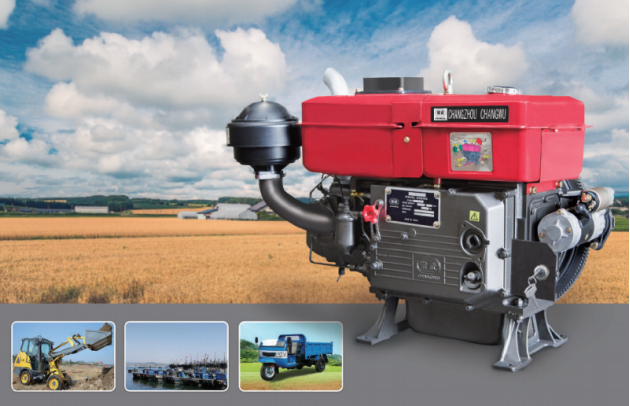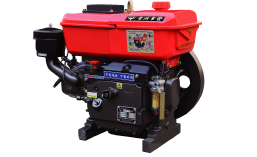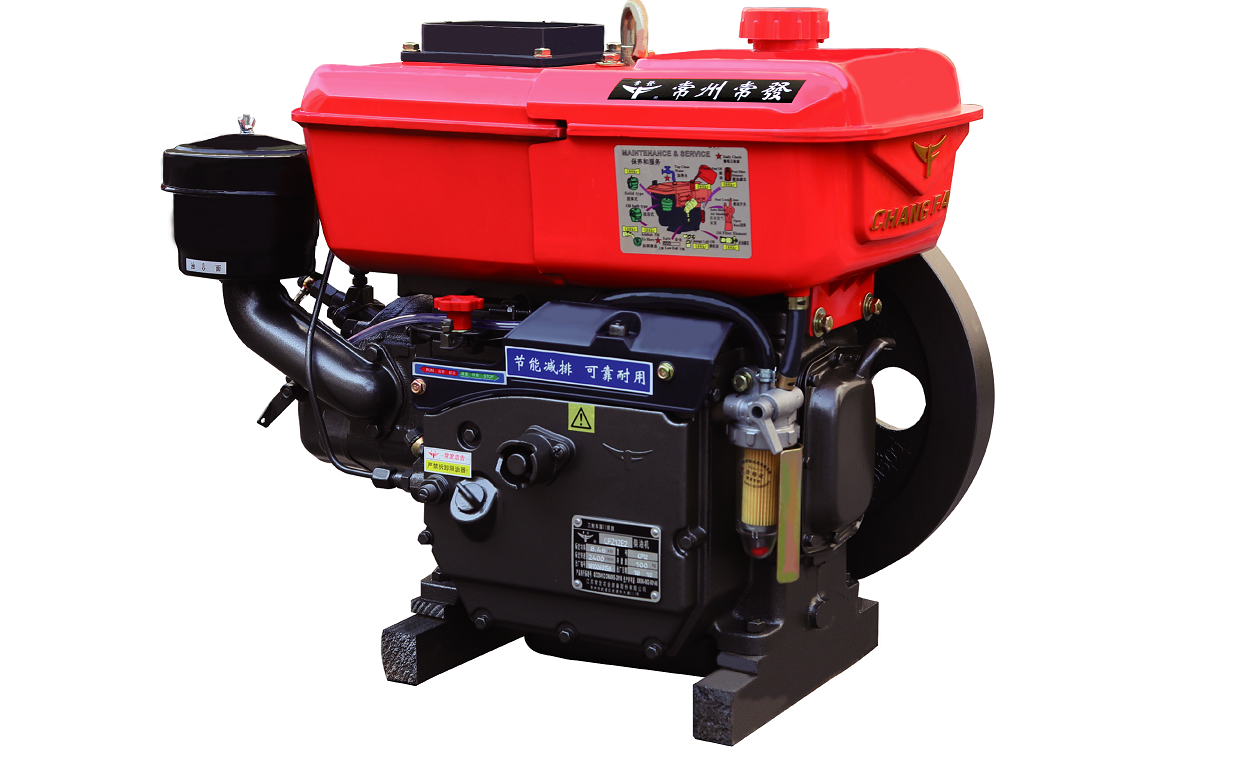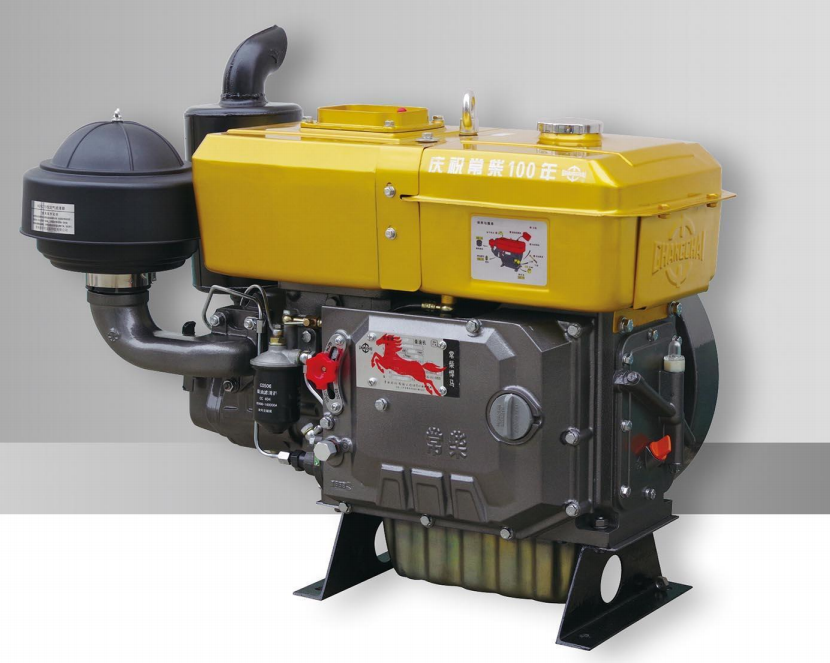- Diesel Engine
A diesel engine is an engine that burns diesel oil to obtain energy and release it. It was invented by the German inventor Rudolf Diesel in 1892. To commemorate this inventor, diesel is represented by his surname Diesel, and diesel engines are also called Diesel engines
The work of the diesel engine is completed by the four processes of air intake, compression, combustion expansion and exhaust. These four processes constitute a working cycle. A diesel engine in which the piston goes through four processes to complete a working cycle is called a four-stroke diesel engine.

The advantages of diesel engines are high power and good economic performance. The working process of a diesel engine has many similarities to that of a gasoline engine. Each working cycle also undergoes four strokes of intake, compression, work, and exhaust. However, because the fuel used in diesel engines is diesel, its viscosity is greater than gasoline, and it is not easy to evaporate, and its spontaneous combustion temperature is lower than gasoline. Therefore, the formation and ignition of combustible mixtures are different from those of gasoline engines. The main difference is that the mixture in the cylinder of a diesel engine is compression-ignited instead of being ignited. When the diesel engine is working, air enters the cylinder. When the air in the cylinder is compressed to the end, the temperature can reach 500-700℃, and the pressure can reach 40-50 atmospheres. When the piston is close to top dead center, the high-pressure pump on the engine injects diesel into the cylinder at high pressure. The diesel forms fine oil particles, which are mixed with high-pressure and high-temperature air. At this time, the temperature can reach 1900-2000℃, the pressure can reach 60-100 atmospheres, and the generated power is very large, so diesel engines are widely used in large diesel vehicles.
The advantages of diesel engines in terms of energy saving and carbon dioxide emissions cannot be replaced by all heat engines including gasoline engines. Therefore, advanced small high-speed diesel engines, whose emissions have reached the European III standard, have become "green engines". , Has now become the power plant of many new cars in Europe and America.
The main mechanical components of a diesel engine generally include: body, crank and connecting rod mechanism, air distribution mechanism, fuel system, lubrication system, cooling system, and electrical system.
Body: the skeleton of the diesel engine, which supports and installs other components, including: cylinder block, cylinder liner, cylinder head, cylinder head gasket, oil pan, flywheel housing, timing gear housing, front and rear feet.
Crank connecting rod mechanism: It is the main moving part of the diesel engine. It can convert the energy generated by fuel combustion into mechanical energy through pistons, piston pins, connecting rods, crankshafts, and flywheels. Including crankshafts, connecting rods, pistons, piston pins, piston pin cir-clips, piston pin bushings, piston rings, main bearings, connecting rod bearings, thrust bearings, front and rear crankshaft oil seals, flywheels, shock absorbance, etc.
Air distribution mechanism: the intake and exhaust valves are opened and closed at regular intervals. Including timing gears, camshafts, lifters, jacks, rocker arms, valves, valve springs, valve seats, valve guides, valve lock blocks, intake and exhaust pipes, air filters, silencers, superchargers, etc. .
Fuel supply system: according to the needs of the diesel engine, the diesel fuel is supplied to the combustion chamber in a fixed and quantitative manner. Including diesel tank, fuel pipe, diesel filter, fuel injection pump, fuel injector, etc.
Lubrication system: It supplies lubricating oil to each movement friction pair, including oil pump, oil filter, pressure regulating valve, pipeline, instrument, oil cooler, etc.
Cooling system: Dissipate the heat generated by the diesel engine to the atmosphere. Including water tank, water pump, fan, water pipe, thermostat, water filter, fan belt, water temperature meter, etc.
Electrical appliances: auxiliary equipment for starting, lighting, monitoring, and operation. Including generators, starting motors, batteries, relays, switches, wiring, etc.
Diesel engines can be classified according to different characteristics: high-speed, medium-speed and low-speed diesel engines are classified according to speed; direct injection, swirl chamber, and pr-chamber diesel engines are classified according to the type of combustion chamber; and they are classified into turbocharged according to cylinder intake mode And non-supercharged diesel engines; according to the gas pressure action mode, it is divided into single-acting, double-acting and opposed piston diesel engines, etc.; according to the purpose, it is divided into marine diesel engines, locomotive diesel engines, etc.
There are many types of diesel engines. ①According to the working cycle, it can be divided into four-stroke and two-stroke diesel engines. ②According to the cooling method, it can be divided into water-cooled and air-cooled diesel engines. ③According to the intake mode, it can be divided into supercharged and non-supercharged (naturally aspirated) diesel engines. ④According to the speed, it can be divided into high-speed (greater than 1000 rpm), medium-speed (350-1000 rpm) and low-speed (less than 350 rpm) diesel engines. ⑤According to the combustion chamber, it can be divided into direct injection, swirl chamber and pr-chamber diesel engines. ⑥According to the gas pressure action mode, it can be divided into single-acting, double-acting and opposed piston diesel engines. ⑦According to the number of cylinders, it can be divided into single-cylinder and multi-cylinder diesel engines. ⑧ According to the purpose, it can be divided into marine diesel engines, locomotive diesel engines, automobile diesel engines, power generation diesel engines, agricultural diesel engines, and engineering machinery diesel engines.
Diesel engines can be classified according to characteristics, such as speed, or type, such as stroke. No matter how the diesel engine is classified, it is to meet the needs of convenience!
- Previous article: What are the components of a hydraulic motor
- Next article: What You Should Know About Tractors

 中文
中文 English
English Español
Español Français
Français




